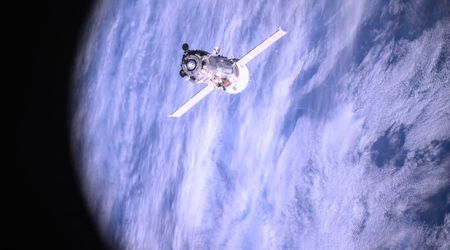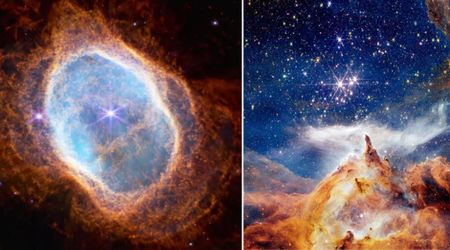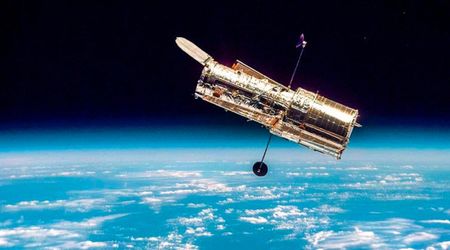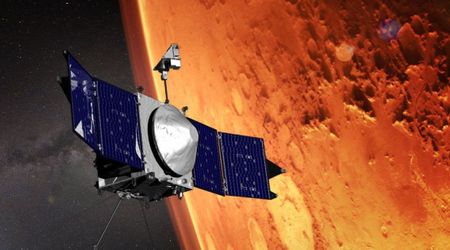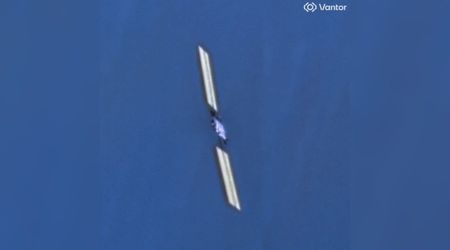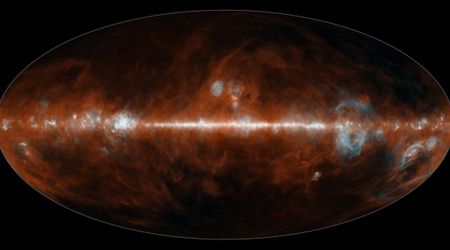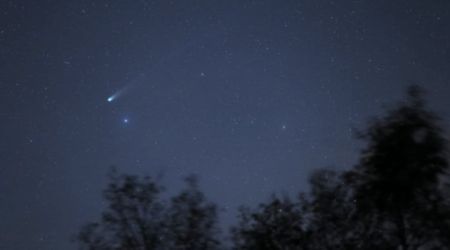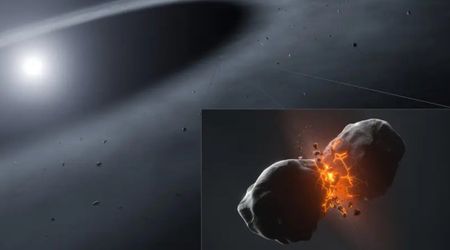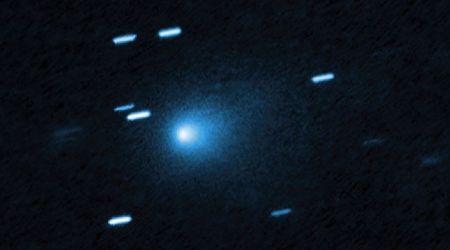NASA's James Webb uncovers dark matter's secrets in highly detailed new images of Bullet Cluster

The James Webb Space Telescope has delivered its most detailed images yet of the Bullet Cluster, revealing an unexpected abundance of faint, distant galaxies and offering crucial new insights into the distribution of dark matter and the dynamics of galactic collisions. This groundbreaking data has enabled researchers to construct the most comprehensive map to date of the content of colliding galaxy clusters, according to NASA.
Hello darkness my old friend…
— NASA Webb Telescope (@NASAWebb) June 30, 2025
What you are (not) seeing, highlighted in blue, is dark matter. Webb was used to precisely map out the dark matter that is part of the makeup of two colliding galaxy clusters. https://t.co/Qxb3O8jOuP pic.twitter.com/tMxIYyT4lQ
The observations, captured by Webb's Near-Infrared Camera (NIRCam), significantly refine previous understanding of the Bullet Cluster's mass. “With Webb’s observations, we carefully measured the mass of the Bullet Cluster with the largest lensing dataset to date, from the galaxy clusters’ cores all the way out to their outskirts,” stated Sangjun Cha, lead author of the study published in The Astrophysical Journal Letters and a PhD student at Yonsei University in Seoul, South Korea. Earlier studies, constrained by less comprehensive lensing data, yielded less precise mass estimates for the colossal system. “Webb’s images dramatically improve what we can measure in this scene — including pinpointing the position of invisible particles known as dark matter,” added Kyle Finner, a co-author and an assistant scientist at IPAC at Caltech in Pasadena, California.
The Bullet Cluster is iconic, having provided the first direct proof of dark matter with NASA's Chandra, Hubble, and ground-based telescopes back in 2006. This spectacular new image combines Chandra & Webb Telescope data — helping us learn more about dark matter than ever before. https://t.co/cUXr0d4s5R
— Chandra Observatory (@chandraxray) June 30, 2025
Galaxy clusters, massive collections of galaxies bound by gravity, act as gravitational lenses, bending and magnifying light from background galaxies. This phenomenon is key to mapping the elusive dark matter, which constitutes a significant portion of the universe's mass but does not emit, reflect, or absorb light. “Gravitational lensing allows us to infer the distribution of dark matter,” explained James Jee, a co-author, professor at Yonsei University, and research associate at UC Davis in California.

He likened the effect to observing pebbles at the bottom of a pond. “You cannot see the water unless there is wind, which causes ripples. Those ripples distort the shapes of the pebbles below, causing the water to act like a lens.” In this cosmic analogy, dark matter represents the water, and distant galaxies are the pebbles. The research team analyzed thousands of galaxies within Webb's images to precisely "weigh" both visible and invisible mass within the Bullet Cluster. They also meticulously mapped and measured intracluster stars — stars that are no longer gravitationally bound to individual galaxies but are instead associated with the cluster's dark matter halo.
A new composite image of the Bullet Cluster overlays Webb's NIRCam data with X-ray observations from NASA's Chandra X-ray Observatory (showing hot gas in pink) and the newly refined dark matter distribution (represented in blue). The visual underscores a key finding: “We confirmed that the intracluster light can be a reliable tracer of dark matter, even in a highly dynamic environment like the Bullet Cluster,” Cha affirmed. This correlation suggests a potential pathway to better understand the nature of dark matter.

The updated mass distribution map reveals intriguing details, including an asymmetric elongated mass area within the left cluster, hinting at previous merger events. The observations also provide strong constraints on the behaviour of dark matter particles, demonstrating no significant signs of self-interaction. “As the galaxy clusters collided, their gas was dragged out and left behind, which the X-rays confirm,” Finner noted. Crucially, Webb's data shows that dark matter remains aligned with the galaxies, indicating it was also similarly displaced during the collision, as mentioned by NASA.

The newly identified clumps and elongated mass structures suggest a more intricate history for the Bullet Cluster than previously assumed, potentially involving multiple collisions of galaxy clusters billions of years ago. “A more complicated scenario would lead to a huge asymmetric elongation like we see on the left,” Jee explained, indicating the larger cluster on the left may have undergone prior minor collisions before its dramatic encounter with the cluster now on the right. Despite the Webb telescope's expansive view, it captured only a portion of the colossal Bullet Cluster, described by Jee as "like looking at the head of a giant." Future observations, particularly with NASA's Nancy Grace Roman Space Telescope, slated for launch by May 2027, are anticipated to provide a complete picture. “With Roman, we will have complete mass estimates of the entire Bullet Cluster, which would allow us to recreate the actual collision on computers,” Finner stated.
Located in the Carina constellation, approximately 3.8 million light-years from Earth, the Bullet Cluster continues to be a crucial laboratory for studying the fundamental forces shaping our universe. The James Webb Space Telescope, a collaborative effort led by NASA with ESA and CSA, continues to push boundaries of astronomical discovery, unraveling cosmic mysteries from our solar system to the universe's origins.
